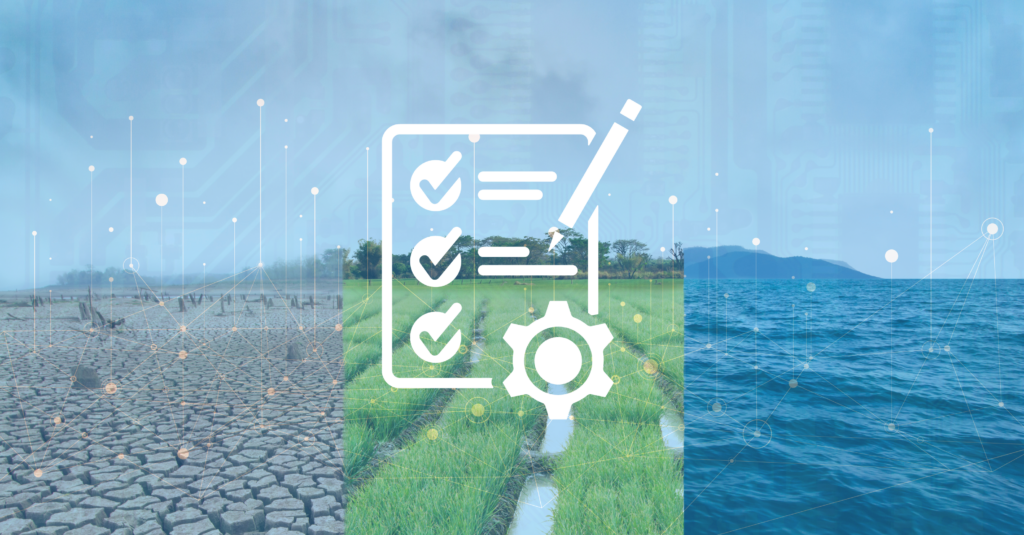What is a Climate Risk Assessment?
A climate risk assessment is a process used to evaluate the likelihood of potential risks and vulnerabilities associated with climate change. It involves analyzing current and future climate conditions, identifying potential hazards such as extreme weather events, sea-level rise, and changes in temperature and precipitation patterns, and assessing their potential consequences for cities and their communities. Ultimately, the end goal of a climate risk assessment is to develop plans to manage or avoid these risks.
Climate Risk Assessments are crucial for informing decision-making and guiding the development of policies, plans, and investments aimed at building resilience to climate change. They help stakeholders understand the potential risks and opportunities associated with climate change and prioritize actions to minimize negative impacts and maximize benefits.
What are the Components of Climate Risk?
Climate related hazards: Current climate conditions and how they will change in the future. These conditions will determine the likelihood of an area being affected by extreme events
Exposure: Presence of people, infrastructure or ecosystems in areas that could be adversely affected.
Vulnerability: The susceptibility of exposed systems and components to be adversely affected, influenced by:
- Sensitivity – The degree to which a system or species is affected, either adversely or positively by climate variability or change.
- Adaptive capacity – The ability of people, sectors or systems to adapt to potential damage, seize opportunities or respond to consequences.
Adaptation response: Policies put in place and actions taken to reduce overall risk and increase overall resilience by reducing exposure to hazards and reducing vulnerability through enhancing adaptive capacity, awareness campaigns, improved health infrastructure, boosting employment levels, and investment in research and development.
Now that we’ve covered what climate risk entails, we’ll cover what a climate risk assessment typically entails.
The key steps involved in a climate risk assessment typically include:
- Hazard Identification: Identifying and understanding the different climate-related hazards that could affect a particular area or system, such as floods, droughts, heatwaves, storms, etc.
- Vulnerability Assessment: Evaluating the vulnerability of the systems, assets, or communities exposed to these hazards. This includes understanding their sensitivity to climate impacts and their ability to cope or adapt.
- Impact Assessment: Assessing the potential impacts of climate hazards on various sectors.This involves analyzing both direct impacts (e.g., physical damage) and indirect impacts (e.g., economic disruptions).
- Risk Identification and Analysis: Identifying and analyzing the risks posed by the interaction between climate hazards, vulnerabilities, and impacts. This step involves quantifying the likelihood and magnitude of potential risks under different climate scenarios.
- Adaptation Planning: Developing strategies and measures to reduce the identified risks and enhance the resilience of systems, communities, or ecosystems to climate change. This may involve implementing protective measures, improving infrastructure, changing land use practices, enhancing early warning systems, etc.
More About WatchWire
WatchWire by Tango is a market-leading, energy and sustainability data management platform that uses cloud-based software to collect, automize, and analyze utility, energy, and sustainability data metrics. WatchWire streamlines, automates, and standardizes your sustainability reporting process by integrating directly and/or providing reporting exports to ENERGY STAR Portfolio Manager, LEED Arc, GRESB, CDP, SASB, GRI, and more. The platform provides customizable dashboards, which allow asset managers, sustainability managers, engineers, and more to monitor individual key performance indicators (KPIs) and create custom views for specific use cases.
To learn more about WatchWire and its capabilities, you can visit our website, blog, or resource library, request a demo, or follow us on LinkedIn, Instagram, or Twitter to keep up-to-date on the latest energy and sustainability insights, news, and resources.
 Top Sustainability Trends to Watch in 2025
Top Sustainability Trends to Watch in 2025

 Log In
Log In









